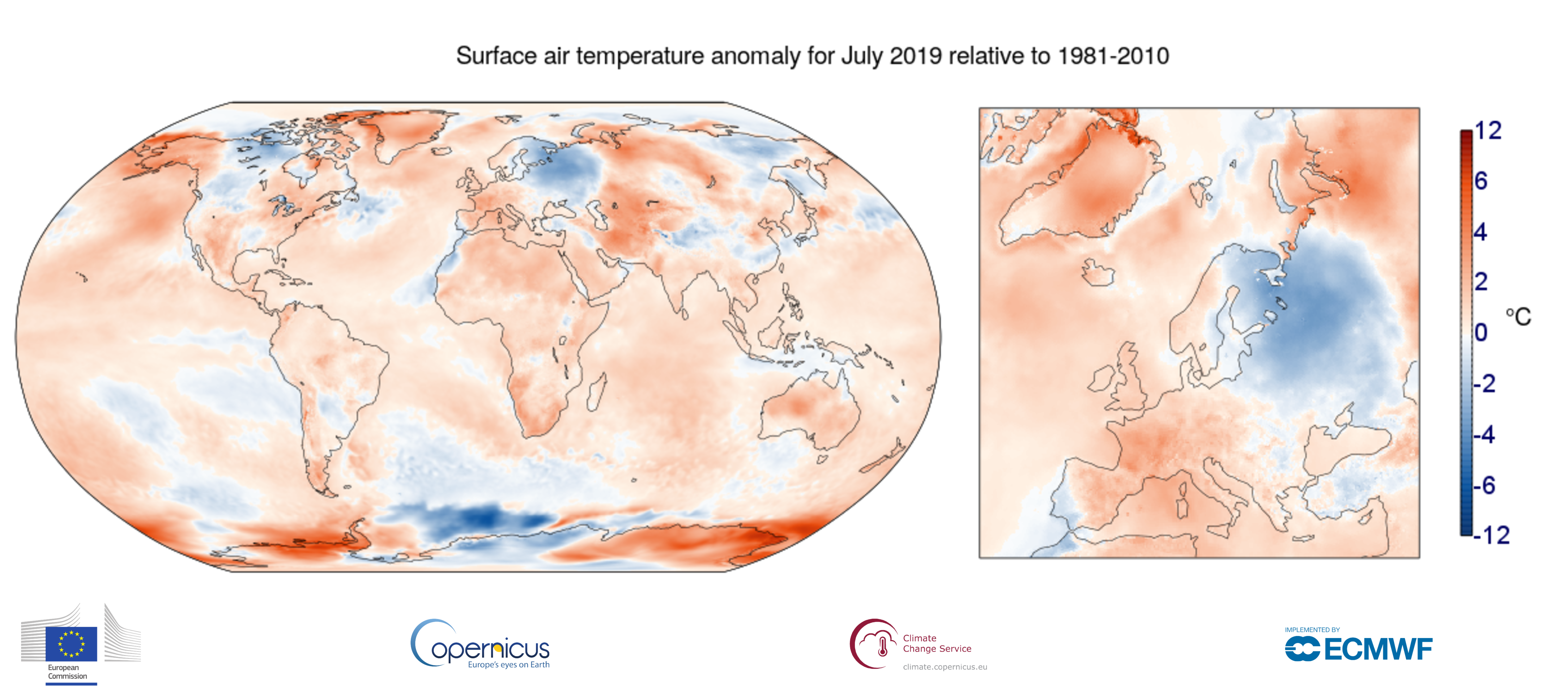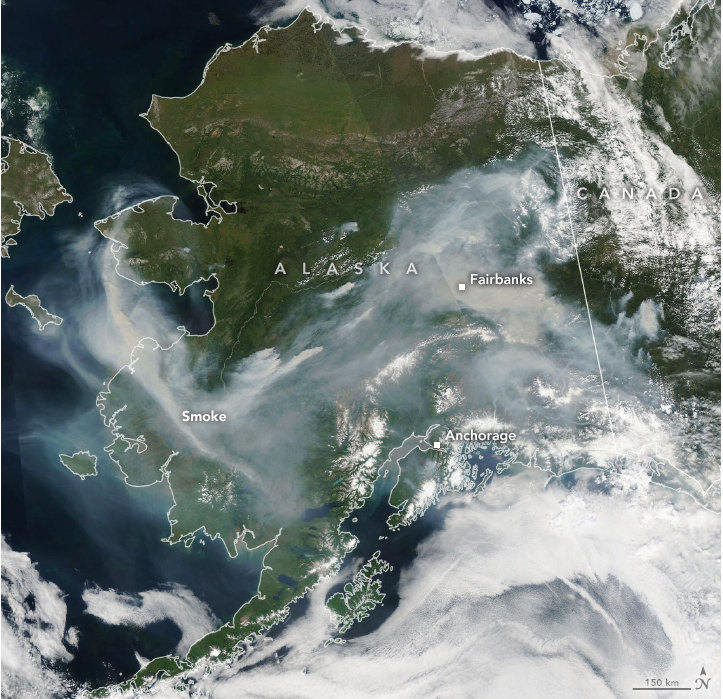

Exceptional July 2019
Data from the World Meteorological Organization and the Copernicus Climate Change Programme indicates that the global mean temperature for July this year matched and possibly slightly exceeded the record for the hottest month on record. 2016 held the previous record for July, but was impacted by a strong occurrence of the El Niño phenomenon, which contributed to the exceptionally high temperatures. Unlike in 2016, however, July 2019 did not have a strong El Niño.
“All of this means that we are on track for the period from 2015 to 2019 to be the five hottest years on record. This year alone, we have seen temperature records shattered from New Delhi to Anchorage, from Paris to Santiago, from Adelaide and to the Arctic Circle. If we do not take action on climate change now, these extreme weather events are just the tip of the iceberg. And, indeed, the iceberg is also rapidly melting,” said UN Secretary-General António Guterres when announcing the data in New York.
The following image shows an anomaly map for July 2019 relative to the reference period 1981-2010.

Extreme Greenland melt and Arctic wildfires
The warming was especially strong over Alaska (USA), Baffin and Ellesmere Islands (Canadian Arctic) and Greenland. Warm air from the European heatwave reached Greenland at the end of July leading to melting of about 90% of the ice sheet surface, reports the American National Snow & Ice Data Center (NSIDC). They estimated a runoff of about 55 billion tons during the event. This is significantly higher than the 1981 to 2010 average (15 billion tonnes). Many parts of Antarctica were also above the average July temperature, as was much of the USA, eastern Canada, Iran, Central Asia, parts of Siberia and most of Africa and Australia. Wildfires were widespread in Alaska and Siberia – a few even occurred in Greenland. It is estimated that the fires in the Arctic emitted 50 million tonnes of carbon dioxide (CO2), which is equivalent to the total annual CO2 emissions of Sweden. The following image shows the smoke over Alaska, which was detected by NASA’s Aqua satellite.

Permafrost thaw
Increased temperatures regions pose the threat of further amplifying global warming. Decomposition rates of dead plant and animal materials are very low in the cold Arctic climate. This has led to a built up of organic material within the permafrost over thousands of years. When permafrost thaws, microbes can decompose the trapped organic matter releasing CO2 and methane to the atmosphere. This in turn might accelerate the global warming even further. Besides the emissions released through the wildfires, they also lead to an ongoing thawing of the ground afterwards. When the soot particles get deposited, the dark surface warms up even further leading to even more warming.


